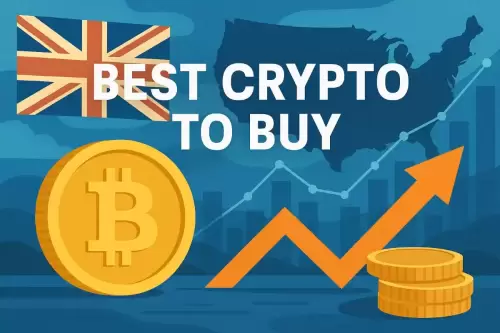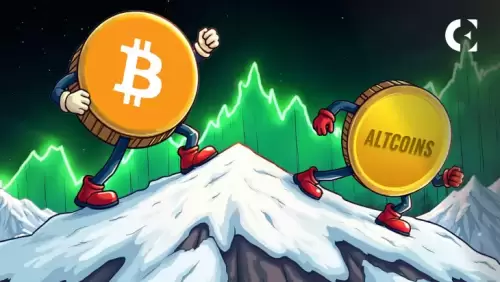 |
|
 |
|
 |
|
 |
|
 |
|
 |
|
 |
|
 |
|
 |
|
 |
|
 |
|
 |
|
 |
|
 |
|
 |
|
Cryptocurrency News Articles
The Ultimate Guide to Building a Crypto Exchange
May 08, 2025 at 01:23 am
Recently we provided blueprints for building your own crypto exchange. Now let's explore crypto wallets, systems that manage users' private keys

Recently we provided blueprints for building your own crypto exchange. Now let’s explore crypto wallets, systems that manage users’ private keys through custodial (centralized) or non-custodial frameworks.
Wallets are the heart of blockchain security, and, unlike centralized exchanges (where FTX's collapse highlights the danger of entrusting others with your digital assets), wallets earn lifelong user loyalty by prioritizing technical rigor.
Features such as multi-signature authentication, cross-chain interoperability, atomic swaps, and gas-fee optimization algorithm can reduce user costs by over 30% during network congestion.
This guide will walk you through the steps required to satisfy wallet users of all technical levels,with API endpoints for fiat on-ramps, customizable fee structures, or even gas optimization. By the end, you’ll have a much more informed idea about how to build a wallet that offers a steady form of recurring revenue.
To start, it’s important to point out that digital vaults offer far more than just a secure place to store funds. Let’s look a little deeper.
Why Are Wallets So Important?
Ask any crypto enthusiast about the exchanges and wallets they’ve used in the past. While they might list dozens of exchanges, their wallet choices rarely exceed two or three trusted names. This loyalty comes from reliability.
Here’s the secret recipe…
Wallet loyalty comes when the tool balances advanced features, like NFT vaults or staking interfaces, with intuitive UX design principles, like QR codes, zero-knowledge proof privacy layers, and native token rewards for regular use.
What Makes a Fantastic Wallet?
There’s a reason the wallet market has fewer players than the exchange market. Many wallet builders fail to realize something crucial right from the start: a top-tier wallet isn’t just about storing keys, it’s about building an ecosystem where cybersecurity engineering meets human-centric design. While that may sound complicated at first glance, it’s not what you’d think. It’s simply a mindset to take into your development.
Now, this part is about to get more technical, so if you’re not quite ready to dissect a quality wallet at that level of detail, scroll on to the next section.
Here are the core components of a world class wallet.
Core Security Frameworks
1. Non-custodial architecture:
Users retain private key control via Hierarchical Deterministic (HD) design or Shamir Secret Sharing (for multi-sig).
2. Attack mitigation:
Brute-force resistance via entropy-strengthened seed phrases (>256-bit entropy), hardware-backed encryption modules (HSM integration), and blockchain anomaly detection algorithms for fraud monitoring.
Technical Functionality Requirements
1. Cross-chain interoperability:
Native support for ETH L2s like Optimism and ZKSync, as well as Solana SPL tokens and Cosmos IBC protocols.
2. Gas fee optimization:
Implement EIP-1559-based fee estimation tools that auto-adjust priority gas during network congestion and batch transactions to reduce costs.
User Experience Design Principles
1. Low-tech accessibility: QR code send/receive workflows, paired with NFT metadata rendering libraries, make it easy to visually validate digital collectible.
2. Advanced UX layers: Things like customizable gas sliders, API access control panels, and “one-click swap” flows, without forcing trade-offs, will earn your wallet a lot of credit.
Before we move on, let’s quickly share some pitfalls to avoid before you start building a wallet.
The Don'ts of Building a Wallet
First off, avoid CLI-only interfaces. These might seem like a good idea to high level developers, but outside of dev circles, they’re pretty inaccessible and only provide value to extremely niche cases. The other main thing to avoid is building a GUI-less platform. Great design of your interface will be crucial to building loyalty and earning fees.
Sometimes, however, you can build on the great existing GUI of another platform, such as Telegram. If that’s your intention, we have a better guide for you.
Now that you’re armed with some technical knowledge about wallets, how are you going to bring your build to life?
Here are two options to help you get started.
Option 1: Build Your Dream Wallet
Remember, your goal here isn’t just to build a simple piece of software, it’s to create trust architecture that loyal users will defend fiercely for years to come. No pressure!
First, like with any product or business, you need to define your audience and their needs. For crypto wallets, and for the benefit of this guide, let’s say there are three simplified audiences:
Next, when building out our wallet, we have to ask, what do they want?
So, we know who we want in our wallet, and we know what they want in our wallet, how are we going to implement that into our
Disclaimer:info@kdj.com
The information provided is not trading advice. kdj.com does not assume any responsibility for any investments made based on the information provided in this article. Cryptocurrencies are highly volatile and it is highly recommended that you invest with caution after thorough research!
If you believe that the content used on this website infringes your copyright, please contact us immediately (info@kdj.com) and we will delete it promptly.
-

-

-

- ChainGPT Releases AIVM Whitepaper, Unifying AI and Blockchain
- May 09, 2025 at 01:45 am
- This content is provided by a sponsor.
-

-

-

-

-

-






























































